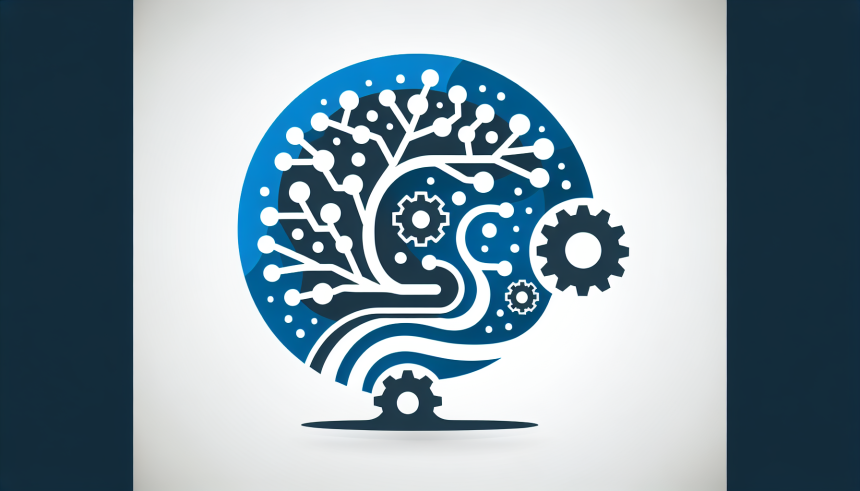The Necessity of Integration in AI Applications
Understanding AI Integration
Integration in artificial intelligence (AI) refers to the amalgamation of AI systems with existing software and frameworks, creating a cohesive ecosystem that enhances decision-making, operational efficiency, and user experience. The rapid proliferation of AI applications across industries underlines the need for this integration as organizations strive for digital transformation.
Why AI Integration Matters
-
Enhancing Efficiency: By integrating AI with pre-existing systems, organizations can streamline processes, reducing redundancies and manual tasks. For example, AI-driven tools can automate data analysis which significantly cuts down the time employees spend on data fetching, allowing them to focus on strategic initiatives.
-
Data Utilization: Businesses accumulate vast amounts of data. AI integration allows organizations to harness this data effectively for insights. By using machine learning algorithms, patterns can be identified, enabling predictive analysis that enhances business decisions.
-
Scalability: Integrated AI systems make scalability more manageable. When AI solutions are connected with core applications, businesses can adapt rapidly to changing market demands. In sectors such as finance, where trading algorithms need to process trades instantly, integration with real-time data feeds can give firms a competitive edge.
Key Areas of Integration in AI Applications
-
Cloud Computing: Cloud platforms provide a flexible and scalable environment for AI applications. Integrating AI with cloud computing services allows organizations to access machine learning models without heavy upfront investment in hardware. This facilitates a pay-as-you-go model, reducing financial barriers for startups and small businesses.
-
Internet of Things (IoT): The conjunction of AI and IoT leads to intelligent device communication. Smart homes equipped with AI can learn from user behaviors, optimizing energy use and enhancing security. For instance, integrating AI with IoT sensors in manufacturing can lead to real-time monitoring and predictive maintenance, reducing downtime.
-
Customer Relationship Management (CRM): Integrating AI technologies into CRM systems can vastly improve customer interaction. Predictive algorithms can analyze customer behavior and preferences, leading to personalized marketing campaigns. AI chatbots can enhance customer service by providing instant responses to inquiries, ensuring customers receive timely assistance.
-
Cybersecurity: As businesses embrace digital transformation, the risks associated with data breaches rise. Integrating AI into cybersecurity helps in identifying unusual patterns and potential threats in real-time. Advanced algorithms can adapt to new threats faster than traditional methods, thereby offering enhanced protection against cyberattacks.
Challenges of Integration
-
Complexity: Integrating AI with existing systems can be complex. Many organizations struggle with legacy systems which may not support modern AI technologies. There are often interoperability issues that can arise, necessitating significant investment in new technology or custom solutions.
-
Data Privacy Concerns: AI systems require vast amounts of data for training and optimization. Organizations must be vigilant about ensuring compliance with data protection regulations such as GDPR. Integrating AI into workflows means establishing robust data governance policies to secure sensitive information.
-
Talent Gap: The success of AI integration hinges on the expertise of personnel. There is a shortage of skilled professionals who can develop and maintain integrated AI systems. Organizations must invest in training or collaborate with external partners to bridge this talent gap.
Strategies for Successful AI Integration
-
Assess Current Infrastructure: Before implementing AI solutions, organizations need to evaluate their existing infrastructure. Understanding what tools and systems are already in place will help identify what needs upgrading and how AI can most effectively be integrated.
-
Pilot Programs: Starting with pilot projects can help organizations understand the capabilities and limitations of AI tools before full-scale implementation. Testing AI in a confined context allows for fine-tuning the systems and assessing the return on investment.
-
Focus on Interoperability: Prioritizing platforms that offer broad interoperability is critical. Ensuring that new AI tools can communicate with existing systems minimizes integration challenges while maximizing efficiency.
-
Adopt a Data-Driven Culture: Fostering a data-driven culture within the organization is essential. Employees at all levels should be encouraged to utilize data and AI tools in their decision-making processes, leading to improved outcomes and innovation.
Emerging Trends in AI Integration
-
Explainable AI (XAI): As AI systems become more complex, the demand for transparency grows. Integrating XAI can help provide insights into how algorithms make decisions. This is particularly important in sensitive areas like healthcare, where understanding AI’s rationale can build trust among users and stakeholders.
-
AI in Edge Computing: With the rise of IoT devices, incorporating AI at the edge offers real-time processing capabilities. This reduces latency and ensures immediate data processing, especially useful in applications such as autonomous vehicles and smart cities.
-
Collaboration with Human Intelligence: The future of AI integration lies in creating synergy between human intelligence and machine learning. This hybrid approach will lead to better problem-solving capabilities as machines augment human decisions rather than replace them.
-
AI-Driven Personalization: The integration of AI in personalizing user experiences is becoming a non-negotiable aspect for businesses. Industries from e-commerce to entertainment are utilizing AI to analyze user data, resulting in tailored recommendations and enhanced customer satisfaction.
Final Thoughts on AI Integration
Integrating AI across businesses is not merely an option; it has become a necessity. The multitude of benefits, from enhanced efficiency and data utilization to improved customer experiences, cannot be overstated. However, organizations must also navigate the challenges that come with such integration. By assessing their infrastructure, piloting programs, ensuring interoperability, fostering a data-driven culture, and keeping abreast of emerging trends, organizations can create a robust AI-integrated environment that fuels innovation and leads to sustained growth.


